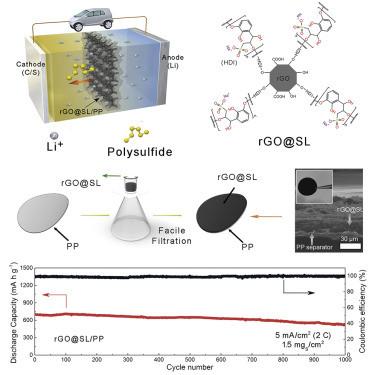A team of researchers from The University of Texas at Austin and University of California in the US, along with teams from the University of Electronic Science and Technology, Hunan University and Soochow University in China, report the design of a negatively charged graphene composite separator for the effective suppression of the polysulfide shuttling effect in Li-sulfur batteries. The negatively charged 3D porous structure effectively inhibits the translocation of negatively charged polysulfide ions to enable highly robust Li-S batteries.

In their paper, the researchers show that by using a reduced graphene oxide (rGO)/sodium lignosulfonate (SL) composite on the standard polypropylene (PP) separator (rGO@SL/PP), they demonstrated a highly robust Li-S battery with a capacity retention of 74% over 1,000 cycles.
Such a separator could simply replace traditional separators without modifying the electrode structure of batteries, allowing rapid deployment in the field to exert a rapid impact on practical technologies, the researchers said.

